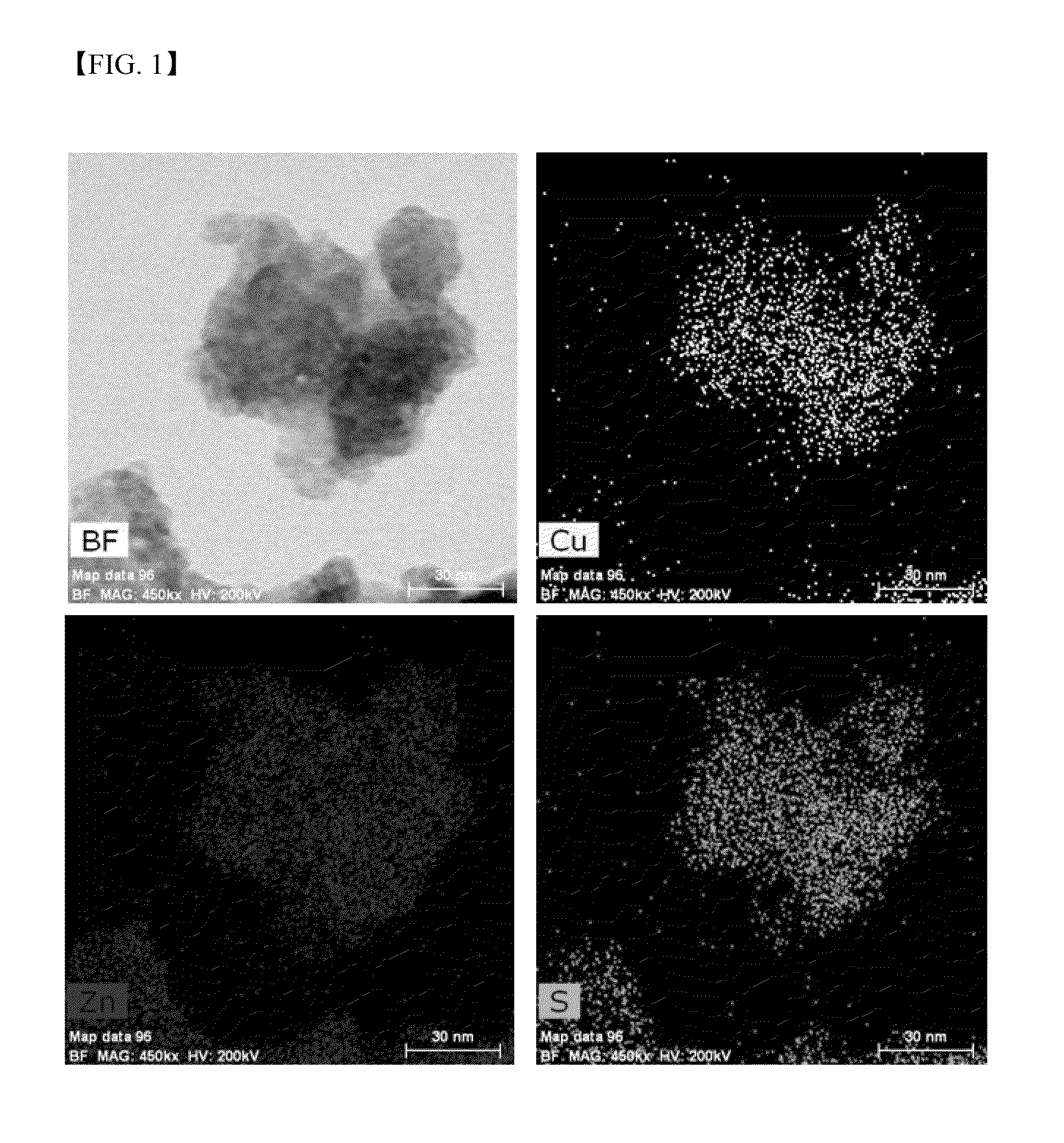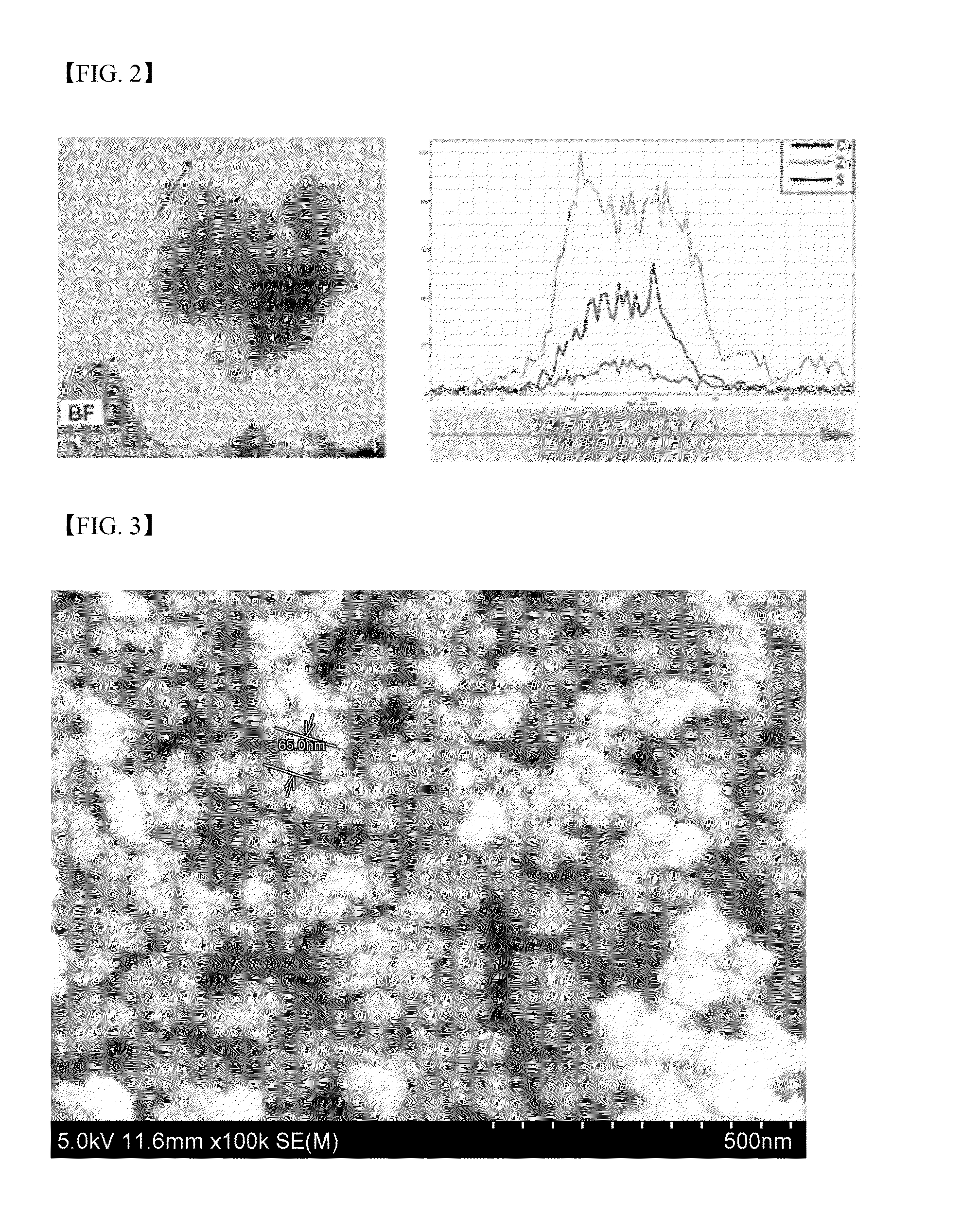Metal chalcogenide nanoparticles for manufacturing solar cell light absorption layers and method of manufacturing the same
- Summary
- Abstract
- Description
- Claims
- Application Information
AI Technical Summary
Benefits of technology
Problems solved by technology
Method used
Image
Examples
example 2
Synthesis of ZnS—CuS Particles
[0116]10 mmol of zinc chloride, 20 mmol of thioacetamide, 2 mmol of polyvinyl pyrrolidon were dissolved in 200 ml ethylene glycol and then reacted at 180° C. for 3 hours. Subsequently, the reacted product was purified through centrifugation, resulting in ZnS particles. The ZnS particles were vacuum-dried and then dispersed in 100 ml of ethylene glycol. Subsequently, 2.5 mmol of CuCl2.2H2O dissolved in 50 ml of ethylene glycol was added dropwise to the dispersed product. After reaction for 3 hours, the solution was purified through centrifugation, resulting in ZnS—CuS particles. An SEM image, EDX result, and XRD graph for the formed particles are shown in FIGS. 5 to 7.
example 3
Synthesis of ZnS—SnS particles
[0117]10 mmol of ZnS obtained in the same manner as in Example 2 was dispersed in 200 ml of ethanol and then 2.5 mmol SnCl4 dissolved in 50 ml of ethanol was added dropwise thereto. The mix solution was stirred for 5 hours at 80° C. and then purified, resulting in ZnS—SnS particles. An SEM image of formed particles is shown in FIG. 8.
example 4
Synthsis of SnS—CuS Particles
[0118]5 mmol of SnCl2, 5 mmol of thioacetamide and 1 mmol of polyvinyl pyrrolidon were dissolved in 100 ml of ethylene glycol and then reacted at 108□ for 3 hours. The reacted product was purified through centrifugation, resulting in SnS particles. The SnS particles were dispersed in 100 ml of ethylene glycol 100 ml and then 4 mmol of a CuCl2.2H2O solution was added dropwise thereto. Subsequently, the solution was stirred at 50° C. for 3 hours, resulting in SnS—CuS particles. An SEM image and XRD graph of the formed particles are shown in FIGS. 9 and 10.
PUM
| Property | Measurement | Unit |
|---|---|---|
| Ratio | aaaaa | aaaaa |
| Reduction potential | aaaaa | aaaaa |
Abstract
Description
Claims
Application Information
 Login to View More
Login to View More - R&D
- Intellectual Property
- Life Sciences
- Materials
- Tech Scout
- Unparalleled Data Quality
- Higher Quality Content
- 60% Fewer Hallucinations
Browse by: Latest US Patents, China's latest patents, Technical Efficacy Thesaurus, Application Domain, Technology Topic, Popular Technical Reports.
© 2025 PatSnap. All rights reserved.Legal|Privacy policy|Modern Slavery Act Transparency Statement|Sitemap|About US| Contact US: help@patsnap.com



